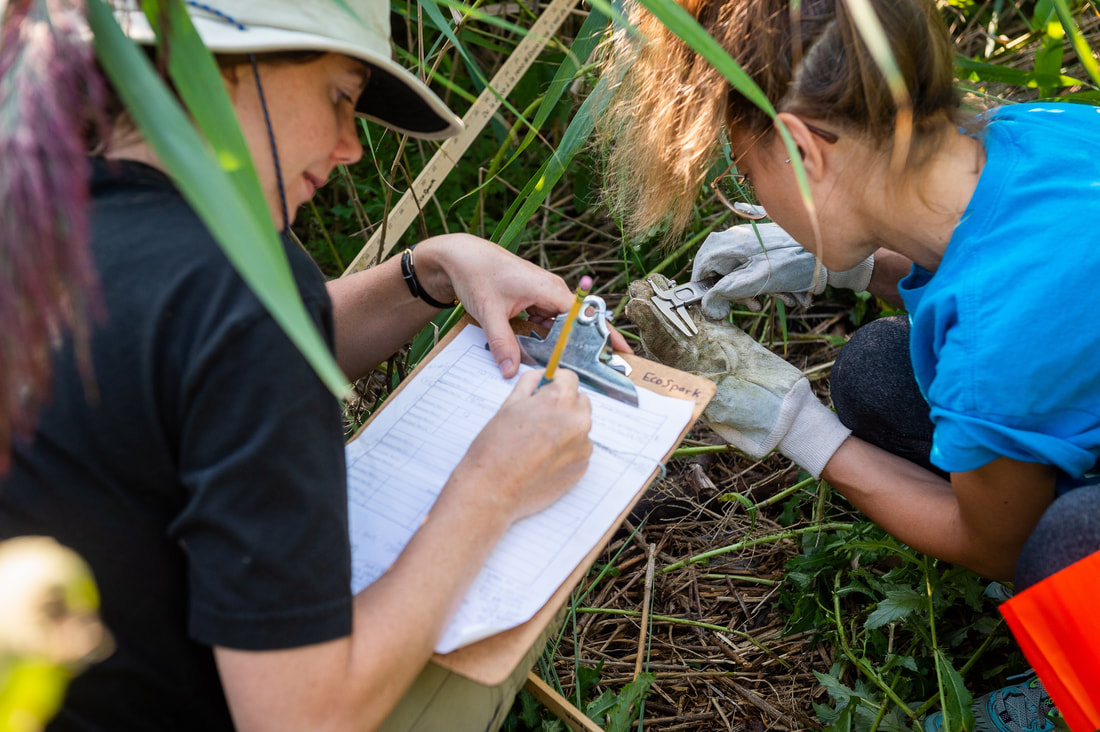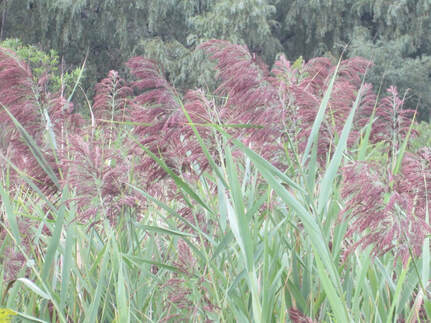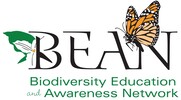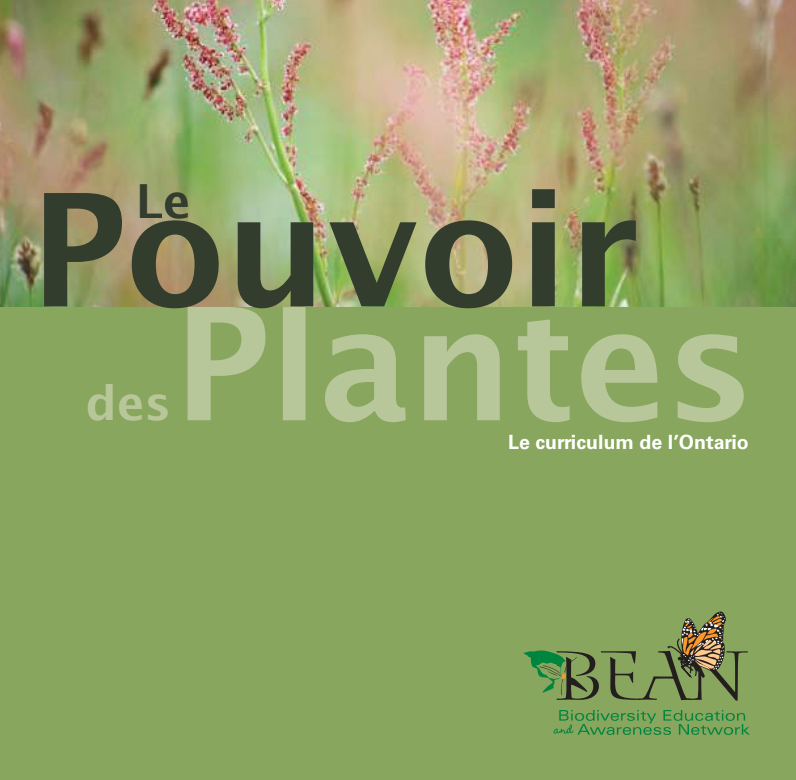|
By: Ecospark Over the past two years EcoSpark partnered with the City of Toronto’s Community Stewardship Program (CSP) and Humber College’s Professor Lynn Short to see how well volunteers could tackle the invasive grass Phragmites australis (AKA common reed, or phragmites). Using Short’s manual removal technique- spading - volunteers removed phragmites with minimal disturbance to the surrounding environment. We compared cutting above the soil, spading once in a season, spading twice in a season, and doing nothing. We also documented the amount of phragmites removed by volunteers, and used surveys to gauge how volunteers felt about their contributions, and whether or not they learned anything. Check out the full report here.  Working on 4 sites across Toronto (Don Valley Brick Works Park; Beechwood Wetland; Milne Hollow; Riverdale Park East), volunteers removed around 2000 pounds of phragmites - amounting to 10 pounds per volunteer per 2 hour spading event! Biodiversity showed a marked increase, even without planting anything, indicating that the seedbed was present but being inhibited. We also saw more wildlife using the areas. Our findings show that volunteers are an excellent way to ensure municipalities can meet their environmental targets while providing capacity building opportunities for communities. What is an Invasive Species? An invasive species is an organism brought from a different region - intentionally or unintentionally - that causes ecological, economic, and social harm. Phragmites is a wetland grass initially coming to eastern Canada in the late 1800s or early 1900s from Eurasia. It existed non-invasively until around mid-century when it started aggressively invading wetlands, ditches, highway corridors, stormwater management ponds, railways, and other disturbed habitats. Check out EDDMapS Ontario to see where phragmites is found and spreading today. Why is Phragmites Harmful?  Phragmites grows longer and faster than other plants, and secretes chemicals that directly inhibit the growth of other plants. It’s high photosynthetic rate means more transpiration (water evaporating out of tiny pores on leaves) occurs in the invaded area than before, decreasing the water table. Phragmites impacts the wildlife that depend on shorelines and shallow water, and it doesn’t provide good nesting and foraging opportunities. The thick stands are hard to move through, making the landscape even more fragmented for wildlife. Phragmites causes blockages and damage to hydrological infrastructure, increasing flood risk and creating economic pressure on municipalities to repair damages. There’s also fire risk due to the dry, brittle stalks and thatch of previous years, invasion of agricultural fields, loss of culturally significant foraging grounds, and safety concerns along highways. War of Attrition! Spading removes the entire shoot along with the portion of the rhizome containing the buds that would produce a new shoot. So not only do the shoots need replacing, the buds that shoots grow out of do too. Meanwhile, the photosynthetically active shoots that would have been providing resources to the rhizome are not there anymore, so the plant has keep dipping into its reserves. It should be done at least twice a year for several years to make a significant dent in the plant’s resources.
0 Comments
Leave a Reply. |
AuthorWrite something about yourself. No need to be fancy, just an overview. Archives
July 2024
Categories |


 RSS Feed
RSS Feed
